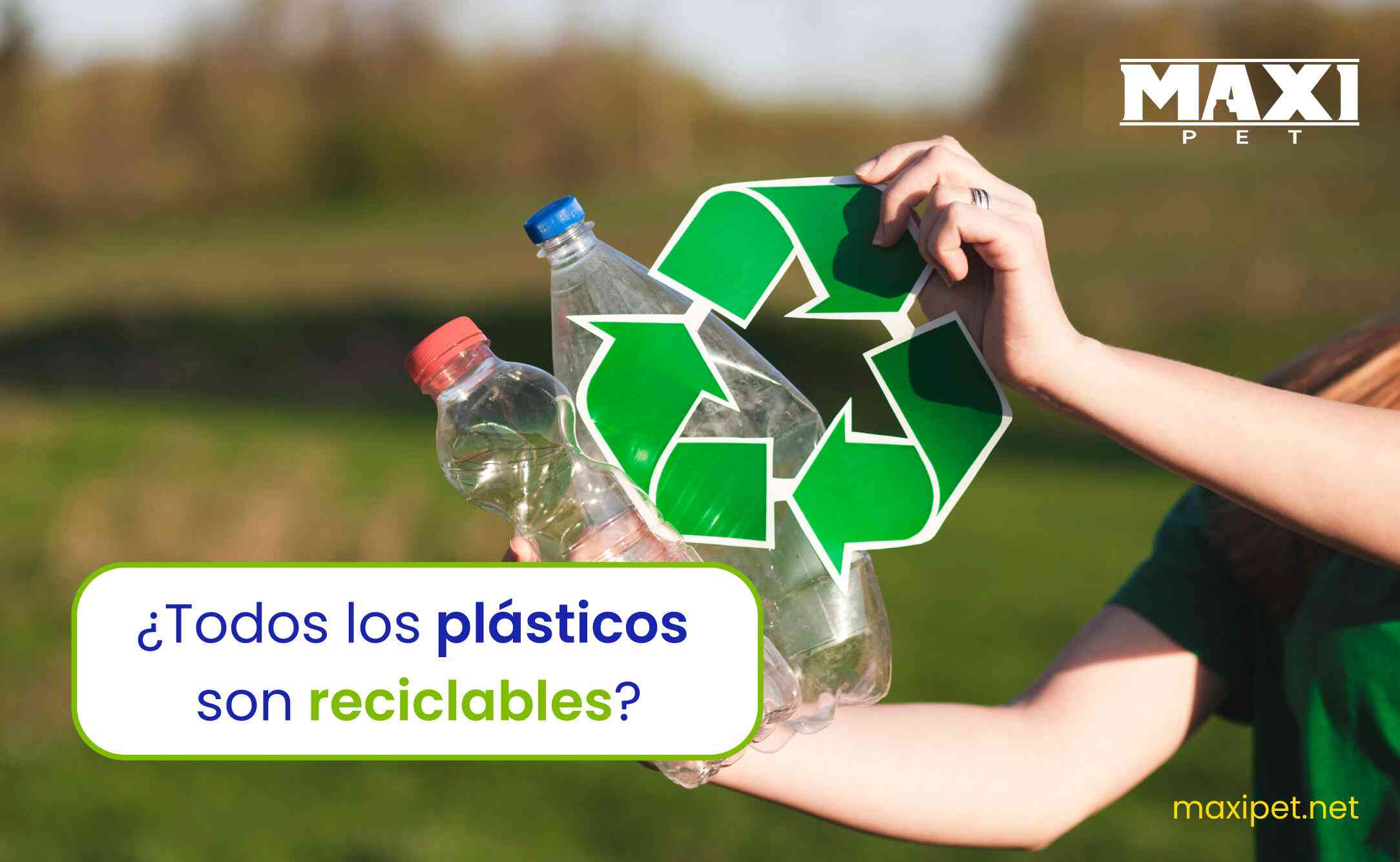Are all plastics recyclable?

Given the various challenges that we currently face due to plastics and pollution, recycling offers a viable solution to combat the damage caused by the excessive use of this material. Therefore, it is the responsibility of companies and us as a society to recycle and reuse plastic to prevent it from becoming garbage.
When you decide to inform yourself about the consumption of plastic and its recycling, a very important question arises: are all plastics recyclable? Don't worry, here we clarify everything you need to know about it.
Did you know…?
The raw materials used to produce plastic are natural products such as coal, natural gas, salt, and oil. In addition, thanks to their different properties, they can be easily molded and adapted to create containers, bags, clothing, household appliances, toys, etc. Plastics can be divided into two groups according to their characteristics:
Thermosets: To mold this type of plastic it is essential to subject it to high temperatures. The properties offered by these thermosets are their durability, weight, and quality. However, it is important to mention that they only assume one form permanently, which makes it impossible to recycle them. An example of this type is resin.
Thermoplastics: This group is made up of linear and branched polymer chains. Therefore, when exposed to heat, they can be easily molded. One advantage they offer is that they can be recycled without any inconvenience. The best-known thermoplastics are HDPE, PP, PET, and PVC.
Recycling: is it the best solution?
Without a doubt, plastic is one of the most used synthetic materials in the industry due to its easy adaptability. However, the exponential growth of cities and overpopulation considerably increased the amount of waste and therefore the demand for raw materials. For this reason, one of the main objectives as a society is the incorporation of recycled material into the industry to minimize household waste.
It is important to mention that plastics also offer sustainable solutions since this material requires less energy for its production and processing. In addition, its durability and versatility allow it to be easily adapted, avoiding the consumption of materials that do represent greater damage to the environment.
Correct classification of plastics
The classification of plastics is the first step for recycling to obtain better results. For this to be possible, plastics must be separated according to the fundamental properties of the material used to produce them. Some of the parameters are color, particle size, density, and electromagnetism. This is why manufacturers must indicate the type of plastic they used to create their products, as it simplifies the recycling process.
Not everything can be recycled
It is very important to note that not all plastics can be recycled. For example, plastic that is mixed with another material such as aluminum or resin is very complicated for it to work for recycling, because it is not easy to separate them. It is also difficult to recycle plastic that has pigments because it can damage the machinery where this process is carried out. Finally, plastic that is exposed to the sun for a long time loses quality and therefore the possibility of recycling it.
If you have any questions about this topic or want to purchase 100% recyclable and resistant plastic containers, do not hesitate to contact us.



